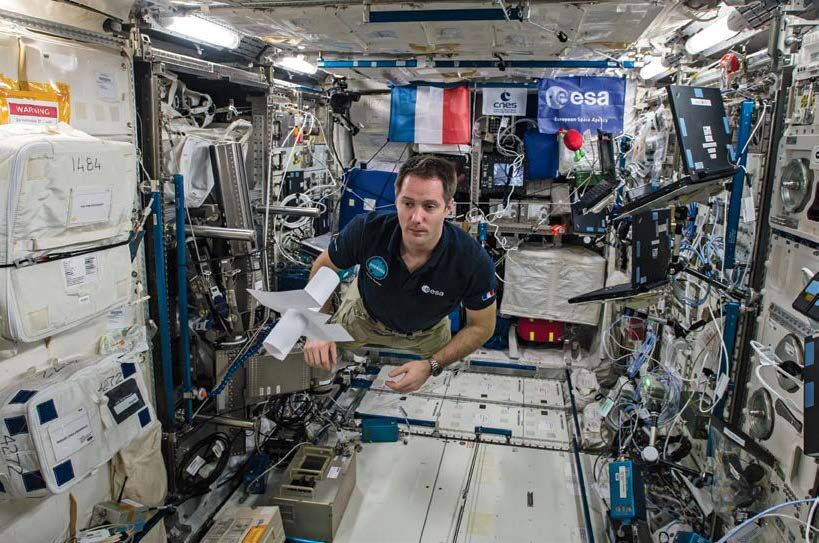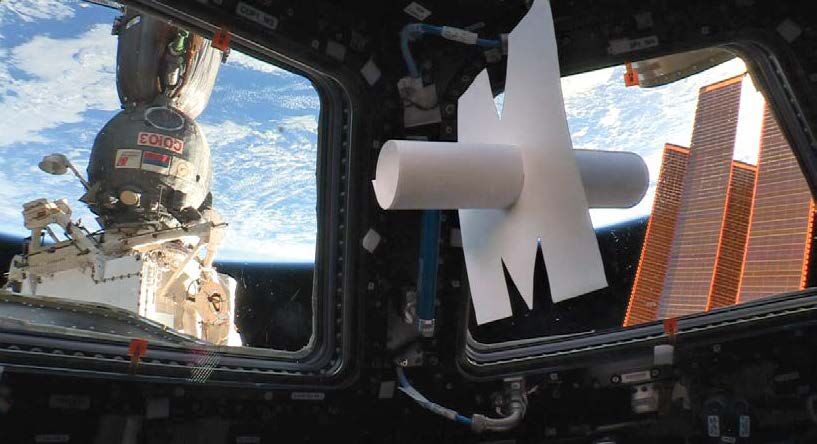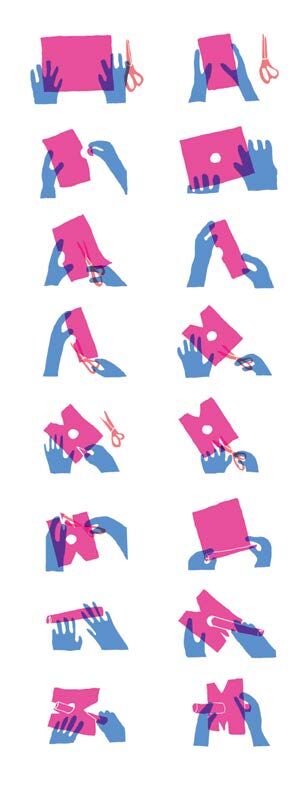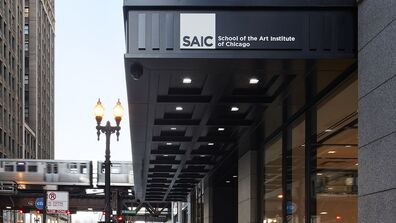
The Process
Eduardo Kac (MFA 1990) on His Process
by Jason Foumberg (MA 2006)

Artist and professor of Art and Technology Studies Eduardo Kac (MFA 1990) recently completed the launch of the world’s first zero-gravity artwork in outer space. Called Inner Telescope, it took Kac nearly 10 years to research, plan, and execute the event that he describes as “a performance for one astronaut, two sheets of paper, and a pair of scissors”—a coy oversimplification for the elaborate interdisciplinary project completed with the French Space Agency’s Culture Lab (L’Observatoire de l’Espace) and the European Space Agency.
Astronaut Thomas Pesquet agreed to enact Kac’s instructions for making Inner Telescope during his February 2017 mission aboard the International Space Station. “He understood my idea right away,” recalls Kac of their initial meeting. Still, the artwork would require the artist to navigate the protocols of aeronautic and space exploration through a multiyear planning process before Inner Telescope could be fully realized.

Kac is a long-time innovator of technology art and digital poetry. He made his first digital artwork in 1982, programmed early interactive Internet art, and has written poetry using DNA, satellites, and holograms. He also coined the term “BioArt,” which has grown into a new field of investigation for artists.
For Inner Telescope, Kac’s goal was to again break new ground by making the first alien artwork, fabricated and displayed entirely beyond Earth. Using materials available aboard the International Space Station, Pesquet cut, folded, and steered the weightless paper sculpture, which resembles a miniature International Space Station, through the spacecraft. Kac used the astronaut’s recording of the space choreography to craft a 12-minute video artwork.


Since all of an astronaut’s time is accounted for onboard, even an artwork would require a research dossier submitted in advance, including the performance’s exact duration. Kac produced a storyboard showing how the astronaut would make the artwork in space. The artist also created a series of black pen drawings, colorful embroideries, photographs, and artist’s books, among other works. These pieces were widely exhibited in 2017 and they’ll be shown throughout 2018 in New York and London, among other cities. In January 2018, the Louvre in Paris showcased Inner Telescope with a screening and a debate.
Kac believes that when humans someday inhabit a planet beyond Earth, we will make art there. “We have to express ourselves. We can’t help it,” he says. “This project was a first step.”
